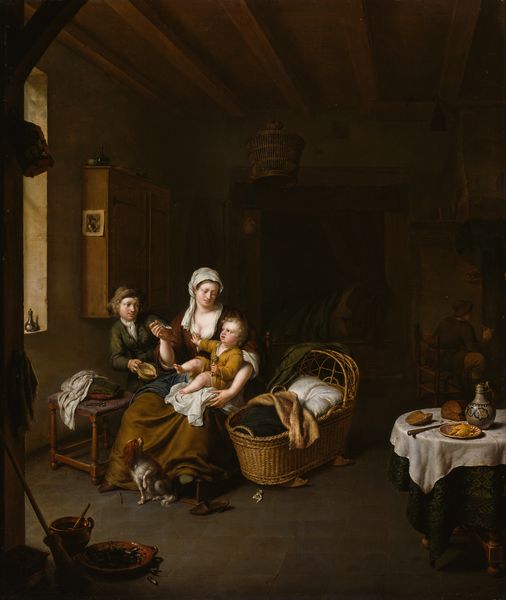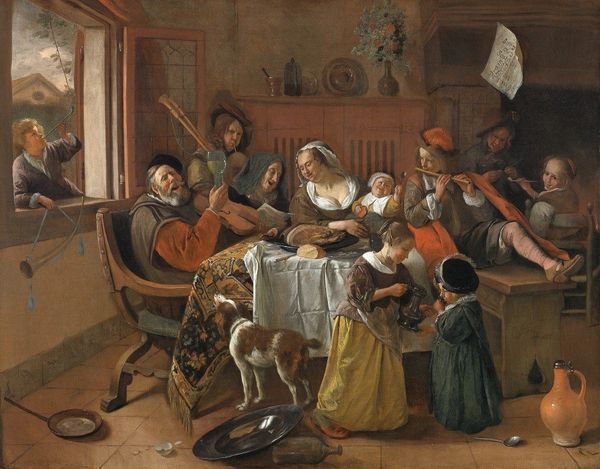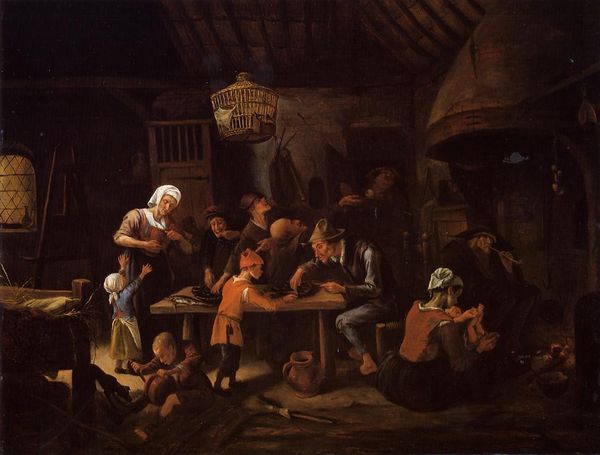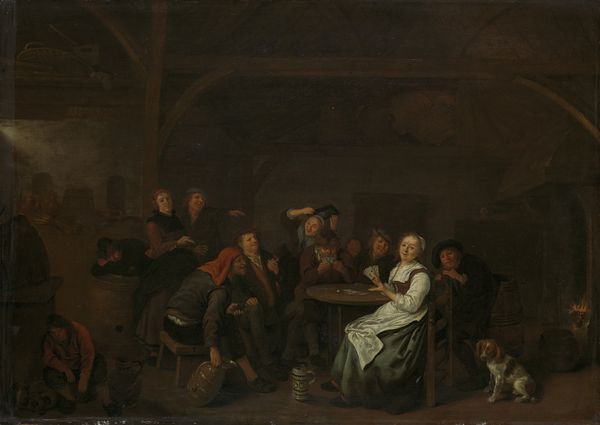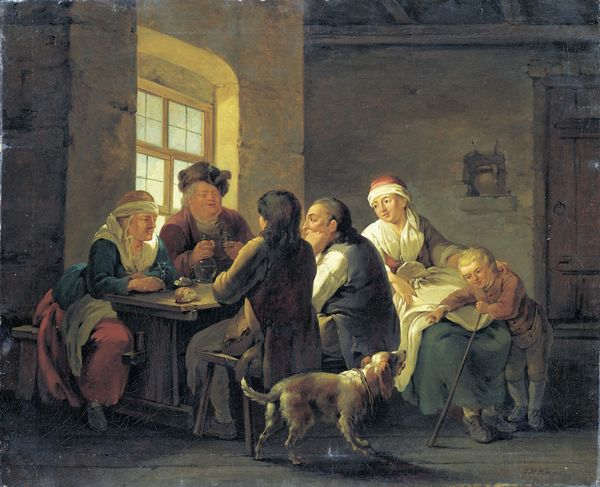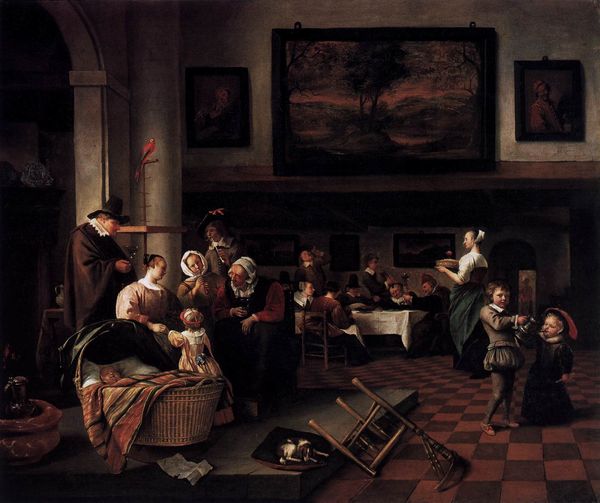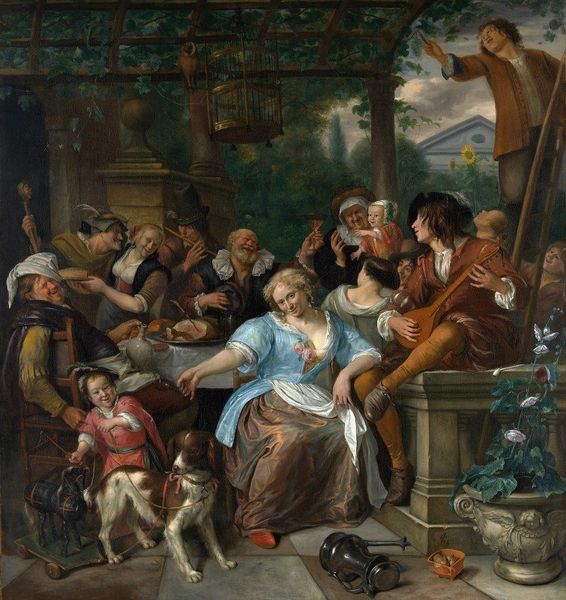
painting, oil-paint
#
portrait
#
figurative
#
narrative-art
#
painting
#
oil-paint
#
figuration
#
group-portraits
#
romanticism
#
genre-painting
#
history-painting
Copyright: Public Domain: Artvee
Editor: This is Louis Léopold Boilly's *The Reading of the Bulletin of the Grand Army*, painted in 1807. It feels so intimate, like a fly-on-the-wall perspective of a family absorbing news from the Napoleonic Wars. How do you interpret the impact of the historical context on a scene like this? Curator: It's striking how Boilly captures a sense of domestic space intertwined with national events. Consider the function of history painting at the time: it was about glorifying the nation. Boilly does something different. He focuses on the anxieties and concerns that the ongoing wars produced within the domestic sphere. Look at their faces, and at the children. How would this painting be perceived and used in propaganda? Editor: That’s a clever question. I see how it might *not* be used. It's almost subversive because it humanizes the cost of war beyond just battlefield victories. Was Boilly part of a particular artistic movement that challenged traditional heroic narratives? Curator: He wasn’t explicitly part of a political art movement, but this focus on the everyday, this emotional realism, resonates with shifts occurring in French society. There was a growing desire to depict reality, warts and all, influencing not just art but also literature and theatre. Is there a critique implied about the grandeur associated with Napoleon? Editor: Maybe implicitly. The darkness and the palpable tension create a counter-narrative. I am now wondering about its public reception. It doesn’t fit easily into celebrating French power at the time, right? Curator: Precisely! Its public role is less about glorification and more about reflection, a kind of quiet commentary on the impact of grand narratives on individual lives. It’s art functioning as a mirror reflecting the human cost, which can be far more powerful than any heroic depiction. Editor: Thanks for that insight. I realize this painting does far more than depict a simple scene; it subtly engages with complex socio-political issues of its time. Curator: Indeed. And hopefully, by exploring this one painting, we gained a deeper awareness of the multiple roles art can play within its socio-historical framework.
Comments
No comments
Be the first to comment and join the conversation on the ultimate creative platform.
